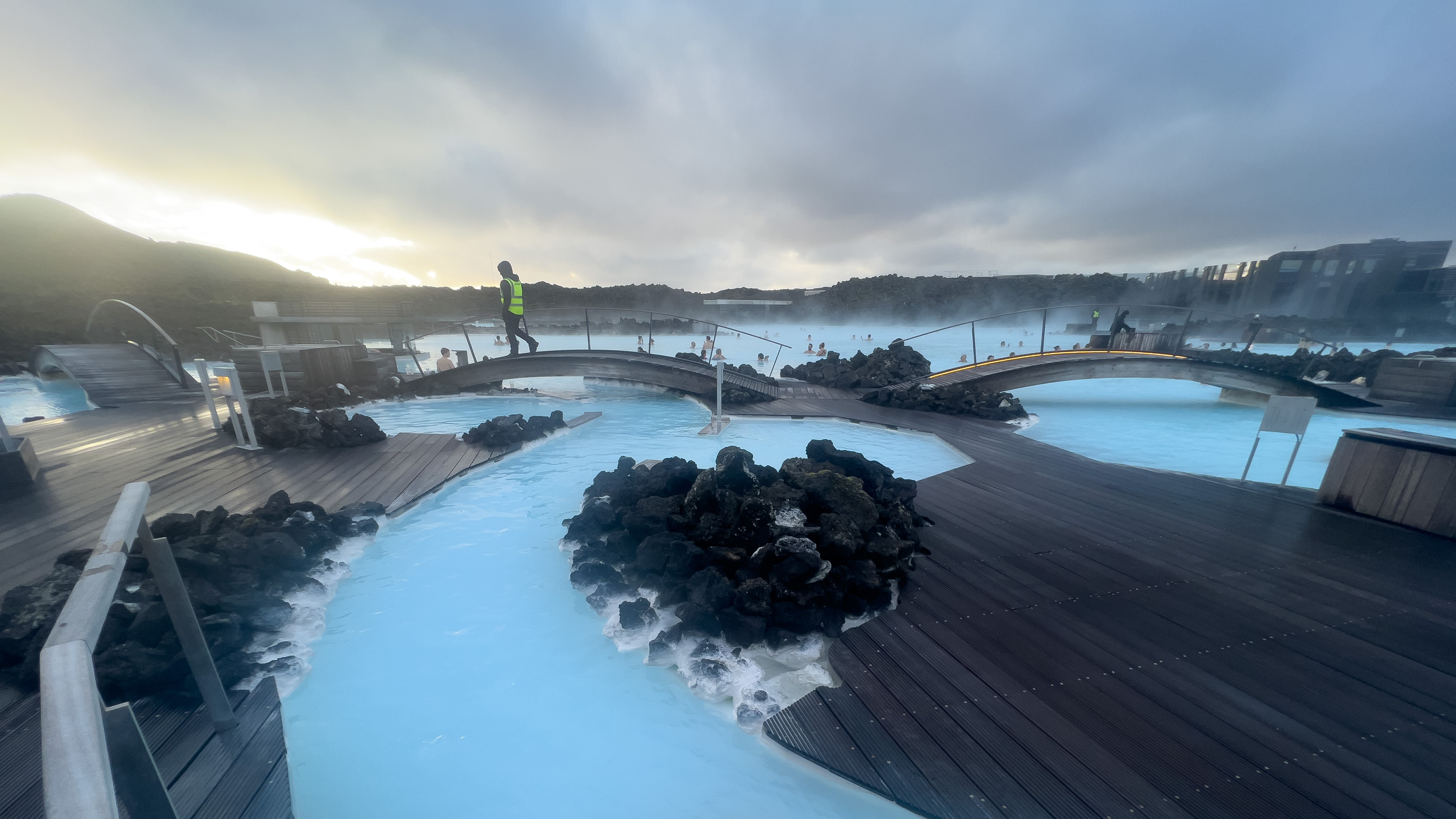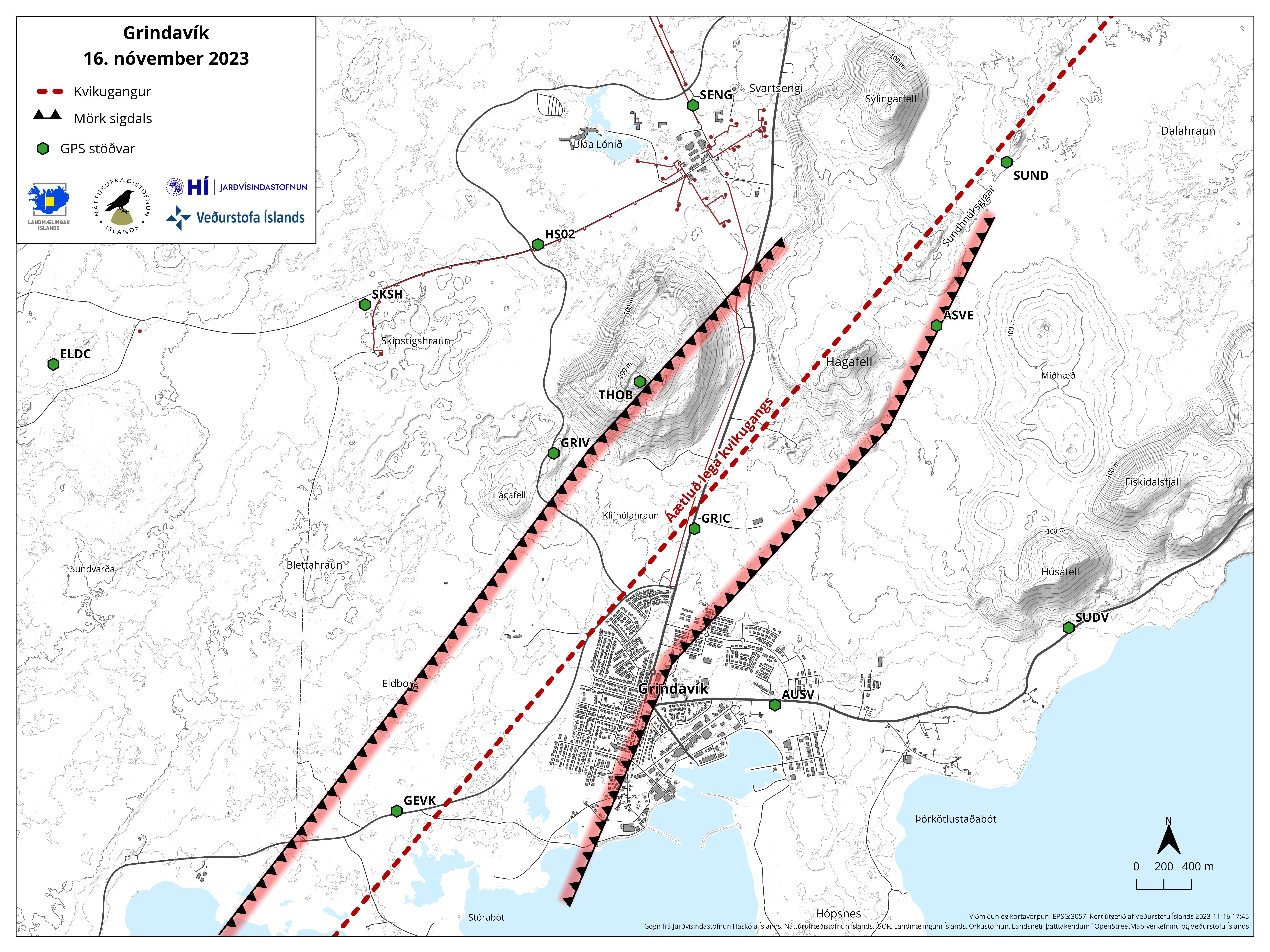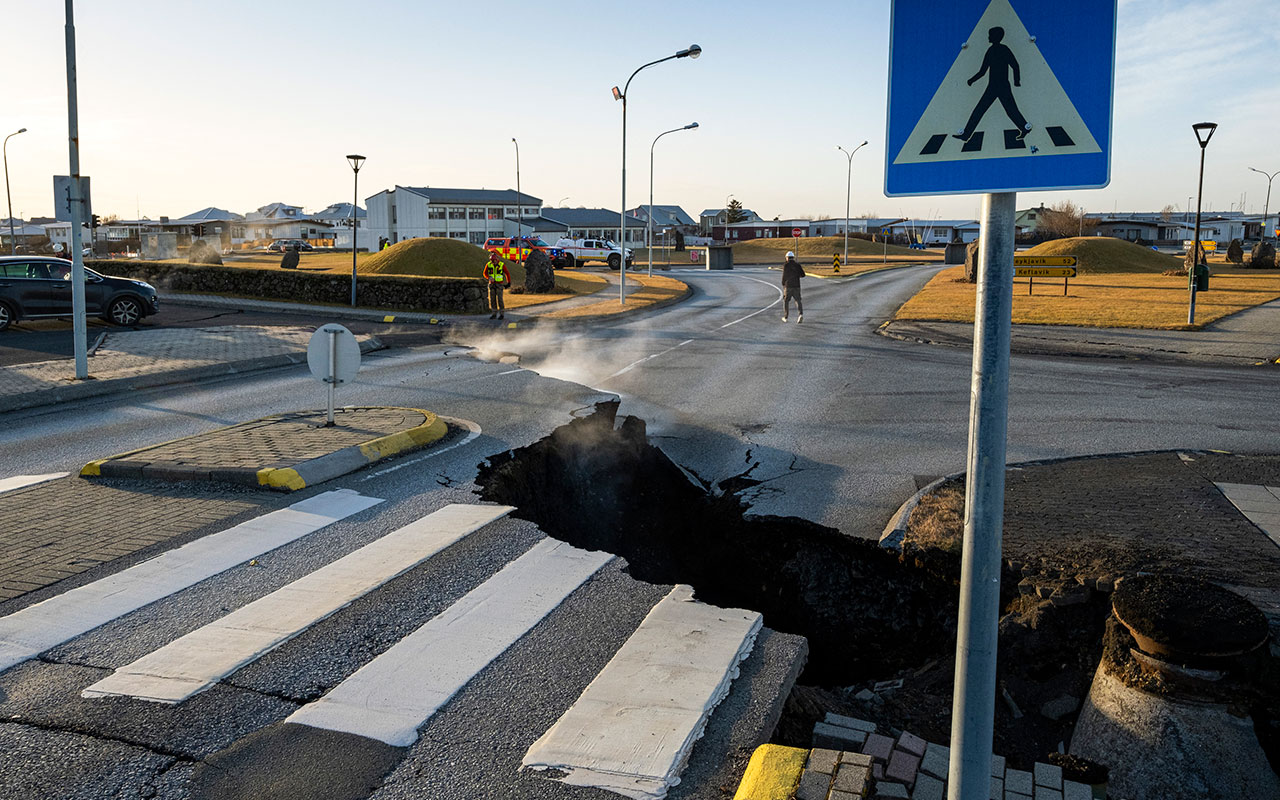Iceland volcano could burst like a 'fizzy drink,' with lava reaching Blue Lagoon resort in days
Magma building beneath Iceland may break through the surface in a volcanic eruption, sending lava flows toward the Blue Lagoon, the Svartsengi geothermal power plant and the town of Grindavík.

The risk of a volcanic eruption in Iceland is not diminishing, and — if a fissure does open — lava could reach the Blue Lagoon resort and the Svartsengi geothermal power plant in just days, an expert says.
The magma in the 9.3-mile-long (15 kilometers) magma dike, a near-vertical underground path, that formed a week ago is currently estimated to be 2,600 to 1,640 feet (800 to 500 meters) below the surface. For an eruption to take place, there must be an increase in pressure that would allow the magma to move up to the surface and break through the crust.
The dike has remained relatively stable over recent days, according to a translated statement from the Icelandic Met Office (IMO), and while some of the magma at the edges of the dike appears to be solidifying, the risk is still very high.

"I do think an eruption will take place, but the big question is when that might happen," Margaret Hartley, a senior lecturer in Earth sciences at the University of Manchester in the U.K., told Live Science in an email. "The past six days have been a waiting game. The number and intensity of earthquakes has decreased since the peak on Friday last week, but that isn't necessarily a sign that the volcanic crisis is dying down."
Related: 'Time's finally up': Impending Iceland eruption is part of centuries-long volcanic pulse
An eruption could take place anywhere along the dike, which runs from Sundhnúk in the north, down into Grindavík and into the sea. The area north of the town of Grindavík near Hagafell is the most likely place that a fissure will appear, representatives from the IMO wrote.
Alberto Caracciolo, a researcher at the University of Iceland's Institute of Earth Sciences, told Live Science in an email that initially, a huge amount of magma drained into the dike, but this has since stabilized to filling at a constant rate. The dike is now growing and opening up, causing ground deformation at the surface — as is evident in the images of sinkholes that have opened in Grindavík.
Sign up for the Live Science daily newsletter now
Get the world’s most fascinating discoveries delivered straight to your inbox.

"If this process continues, at some point the dike will be forced to move up towards the surface," Caracciolo said, adding there is no indication the magma is ascending quickly right now. "If magma inflow continues at a constant rate for an extended period, I imagine the dike will grow and reach the surface in the coming days or weeks."
An eruption would take place when an open fracture connecting the magma dike to Earth's surface opens up, Hartley said. "The most likely way to create this fracture is that a pressure build-up of gas bubbles in the dike will force magma towards the surface, breaking the crust apart," she said. "The process is a bit like shaking up a can of fizzy drink — as soon as a crack opens in the top of the can, the drink escapes with lots of frothing."
If and when lava emerges from the fissure, the magma would likely seep out of the crack and move across the landscape. In July, when the nearby Fagradalsfjall volcano erupted, the fissure was 0.6 miles (1 km) long. If an eruption takes place along the newly formed dike, it would likely be similar to that event, Caracciolo said.
Barriers are now being erected to protect infrastructure, and the country's largest bulldozer has been deployed to construct trenches to divert lava flows. However, there are still many unknowns over what could happen next.
"The extent of lava flows will vary depending on the specific location where the fissure opens, on the magma output rate and on the duration of the eruption," Caracciolo said. "However, in most of the scenarios, lava could reach the power plant and the Blue Lagoon very quickly, in less than [a] few days. A similar fate is likely expected for Grindavík, especially if the fissure opens up in the southernmost part of Hagafell."

Hannah Osborne is the planet Earth and animals editor at Live Science. Prior to Live Science, she worked for several years at Newsweek as the science editor. Before this she was science editor at International Business Times U.K. Hannah holds a master's in journalism from Goldsmith's, University of London.









